Read Bernie’s other Russian Metal reports of the Ilyushin IL-62 and the Ilyushin IL-18.
Andrei Tupolev was an engineering hero. When he saw that the Tu-124’s wingroot engines were sub-optimal for unpaved airfields and difficult to maintain, he decided to change it and create what would be the most prolific regional jet of the Warsaw Pact: the Tupolev Tu-134.
With most of the Russian airlines having replaced their Tu-134 with Canadair Regional Jets, once again- Air Koryo (airline code: JS) is your best bet to catch a ride. Flights within Democratic People’s Republic of Korea (DPRK) are always challenging to arrange. Not only do you need permission from the landing and departing airport, you also need permission to overfly every province and air defense district.
It turns out that ’œflying on a vintage Russian aircraft’ is not enough to satisfy the DPRK bureaucracy. As such, the tour guides always needed a more conventional ’œtouristy’ reason for the flights to be conducted for approvals to be granted quickly. On top of that, the guides had to be granted permission to leave Pyongyang months in advance.
My Tu-134B-3 flights were to and from FNJ to Sondok (DSO) so our group could visit the beaches of the East Korean Sea. On days when there are no scheduled flights to Beijing, Bangkok, Kuala-Lumpur, or Kuwait City the passenger terminal of Sunan airport is empty except for Air Koryo staff and security personnel. Their presence, I realize, was probably entirely for us. Boarding passes, rather than being issued by the airline staff, they were handed out by the tour guides. Two Air Koryo ground agents dutifully stamp them before boarding the bus to the aircraft, if that counts.
Upon boarding any Air Koryo aircraft, I noticed that the paint is a different type to Western airlines. It seems more like house paint. Furthermore, all the paintwork is done by hand. If you look very closely, you can see imperfections and the odd brush stroke on the matte finish of every JS plane.
The cabin is tall enough to stand up in. Seat pitch, however, is extremely tight. I didn’t have a ruler handy- but I’d say around twenty-eight inches. The rest of the cabin is, classic Air Koryo. The plane itself is very well kept- but is showing signs of aging.
The aircraft I flew on, P-814, was the second last TU-134 ever produced. Oddly, JS has converted the tail cone area of their two 134s to act as an additional cargo hold. It’s not insulated, and there are no seatbelts, but I hear that if you sneak there before the pre-take-off checks and are positively insane- you can spend a decent flight in there. Though if you wanted to watch the elevators that badly, there’s a skylight in the lav!
The Tu-134 is one of the few passenger aircraft to have an anhedral wing. Combine that with the wing fences of 1960’s Soviet fighter jets and the same D-30 engines as both the IL-62M and IL-76- and you have a passenger plane that handles more like a long-range interceptor. It even looks sleek on the ground.
The only way to describe the engine start up is: ’œlike a quieter IL-62M’. Takeoff however is a different story. To generate the necessary airspeed to get airborne, a phenomenal amount of thrust is required. Unlike the Ilyushin, there is no need to gain airspeed by leveling off- all that is required is a very high angle of attack.
Before I was fully aware, we were already at cruise. The 134 is a very firm aircraft. The IL-62M, by comparison, felt like an old Bentley gracefully cruising through the sky. Rather than doddle through turbulence, it plows through it at extreme speed. Turbulence on the 134 does not feel as strong laterally, but much stronger vertically. It is a completely different sensation to not only Western aircraft, but also all other Russian aircraft I have been on.
Service on the charter flight to Sondok consisted only of liquids. On a jet aircraft, flying from FNJ-DSO is only twenty minutes. Approach into Sondok was the standard old-school Soviet spiral descent. The worrying part about the landing was that Sondok has a very short, very old, runway that was built before the Korean War.
The Tu-134 has a landing speed that is nearly identical to a Mig-19. Air Koryo pilots average only around 25 hours of flying a month. If something went wrong, things would not have been fun. Thankfully, we arrived in Sondok without a scratch.
The airport itself has no control tower as we would know it- but it was forbidden to photograph due to being property of the KPAF. It was also forbidden to photograph the ’œtop secret military aircraft’. These aircraft, in reality, were roughly 20 Antonov AN-2s and a couple of derelict Lisunov Li-2s.
After shut down, we were allowed to take as many photos of the aircraft as we wanted, so long as they did not face the military ramp. Even the flight crew were willing to pose for photos.
The flight deck was largely in Cyrillic, but the most interesting feature was the ancient Garmin GPS unit strapped to the center console as the modern navigation aid. Civilian GPS is prohibited within the DPRK, but I suppose Air Koryo is not required to abide by that law.
On the flight back to FNJ, we even experienced a go-around. This was due to not only a runway obstruction, but also a wickedly unstable approach attitude. Any other airline, I’d have been purely thrilled- but knowing the fuel margins that Air Koryo was probably running- there was always a small fear in the back of my mind.
The Ty-134 is a great aircraft and I would love to fly on one again for a little longer, but not more than an hour or two. The bumps and tight pitch would probably even begin to fray my nerves. Having said that, I know that a Russian bank operates a VIP configured Ty-134. If anyone affiliated with this bank reads my article and would like to give me a ride. Please do not hesitate to offer.
 |
This story written by Bernie Leighton, Correspondent.
Bernie has traveled around the world to learn about, experience & photograph different types of planes. Bernie will go anywhere to fly on anything. He spent four years in Australia learning about how to run an airline, while putting his learning into practice by mileage running around the world. You can usually find Bernie in his natural habitat: an airport. |
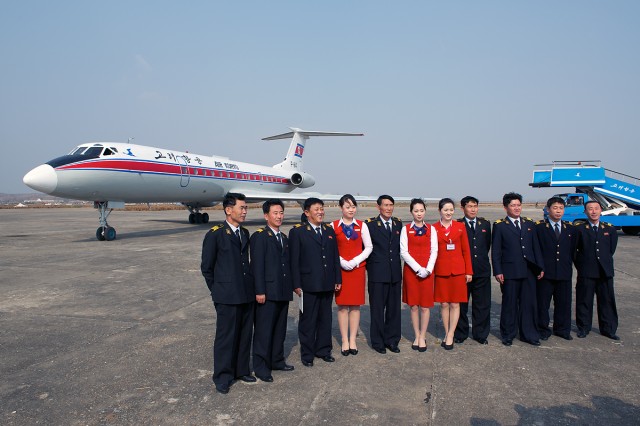
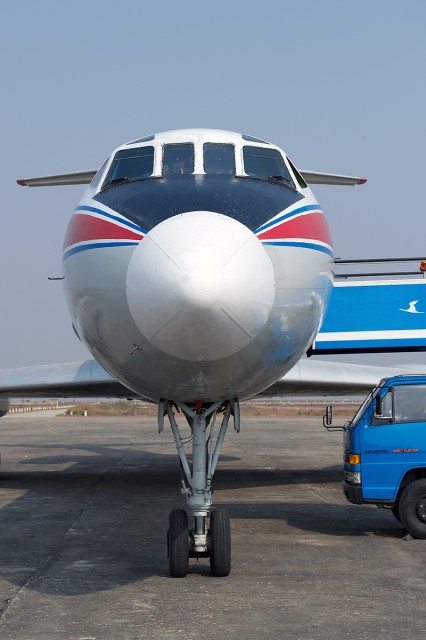
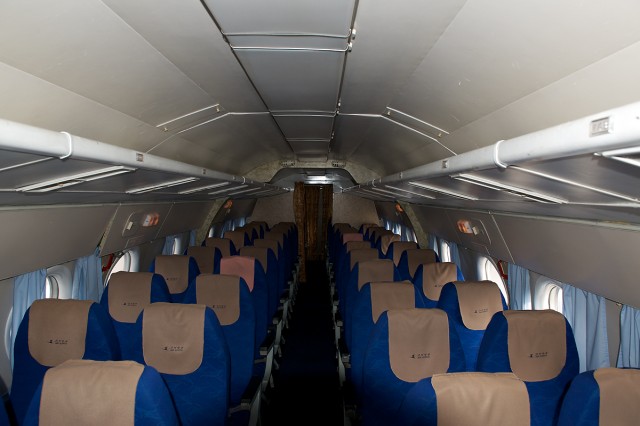
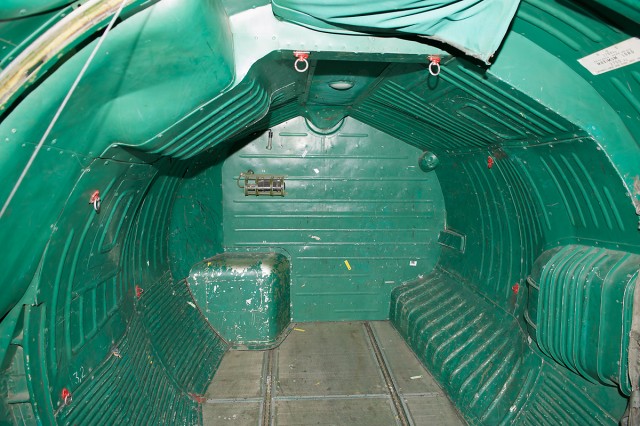
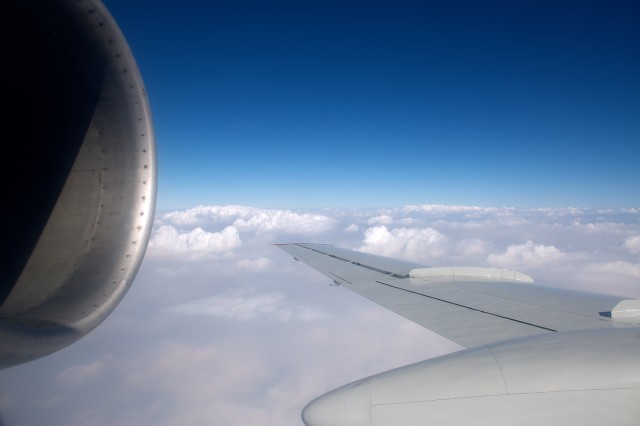
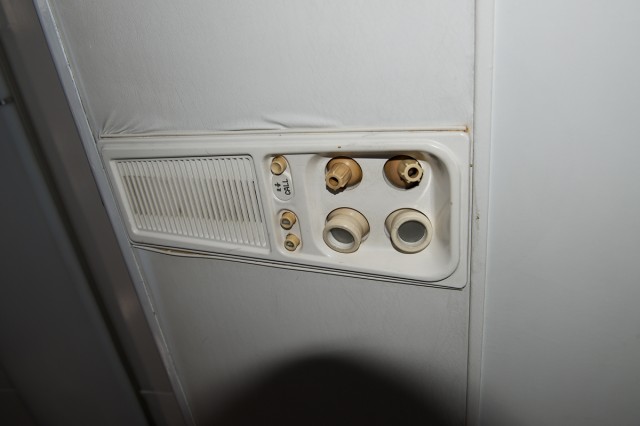

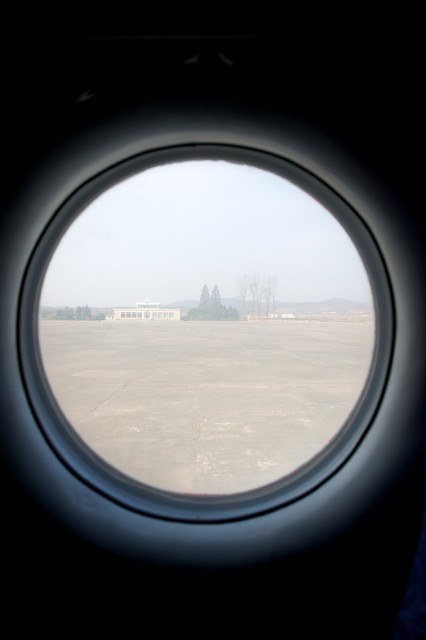
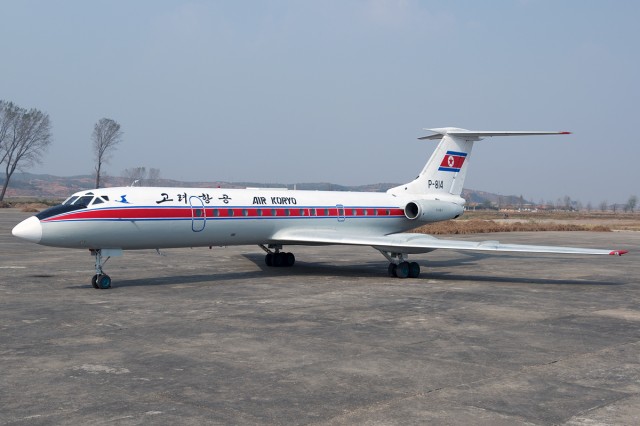
Hilarious, I guess. Anyone willing to endure that many ‘permissions’ for fly on some old Russian blue-green interior paint is truly a certified AvGeek! As much as I enjoy flying a wide variety of aircraft, some genuine vintage stuff when the opportunity becomes available, I think I’d take a pass on the TU-134, at least under these circumstances. Thank you Mr. Leighton, for taking the ride on our behalf. Also had a good chuckle with one of the cabin pix… It appears that the “Call” button is labeled in Engrish! Thanks for the fun post.
Yep, Cook, my sentiments exactly…plus, how great can that bird really be if the author admits he’d rather not ride on it more than hour or two? Not my definition of great.
Incredibly jealous! Enjoyed your write up very much. You are one of the very few, western aviation enthusiasts, to have had the experience of flying in a TU-134. Retired DHC-6 and MU-2 pilot here. I love “odd” aircraft 🙂
Great stuff and awesome looking bird – Active MD 80 Skipper – Previous 727
I like the fighter jet characteristics part
Likewise, I had the wonderful experience of riding a TU-134, only from Riga to Stockholm in July 1995. Beautiful plane. Husky engines. On taxi, they were by far the loudest I had ever heard, and I was in front of the wing! On takeoff, those monsters swollowed their noise, and must have spit it out the aft end in spades. It almost got quiet in the plans. Amazing. The flight crew was so smooth that I only recall one turn, and very gentle at that. Must have been the clouds we flew through that prevented orientation. I was quite impressed with the smoothness and professinalism of that flight crew, and now I regret not thanking them. In addition, the windows are the largest I have even seen on a commercial airliner. Beautiful! The wings are Very Thick, and with no leading edge devices. Reminded me of a DC-3 wing angled with 45 degrees of sweep. And the thing I was worried about, maintenance concerns, production quality (I had worked at McDonnell Douglas on the magnificent assembly lines) and my ego knowing my Douglas built the finest aircraft, all were put into a humble check as I enjoyed the flight, the aircraft, the windows, the wings, the most wild engines I have ever experienced, even those vinyl seats with no padding closely scrunched together, yet amazingly not uncomfortable.
Bloody hell. I’m flying on one in Sept, Pyongyang to Sondok . Feel a lot more nervous after reading this. HeeHee
I got to fly Tu 134 flights several times from DME to MRV in Russia between 2003 and 2006. I loved the aircraft. Mostly Aeroflot was operating them though a couple other regional airlines also flew them. They were painfully loud on the runway, but stable and reliable. The thing I remember best was flying next to the emergency escape hatch. Great views out the big windows, but the instructions were the best. Pull lever to release hatch (I assume explosive bolts) and then the directions said “deploy the emergency escape rope” (which was in a net like bin above the door it was 2 cm hemp rope with knots in it). Still, the plane was clean, the service was wonderful, the food service was the best I have ever eaten on a passenger flight (meals were served on a 2 hour flight) and the pilots so skilled and delicate with the controls you never felt anything. On landing, it was routine that the passengers always applauded. A classy 1960’s aircraft I will miss.